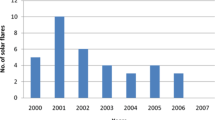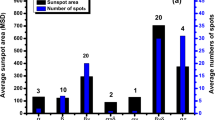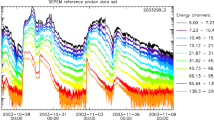Abstract
Solar flares and coronal mass ejections (CMEs) are two very important active events from Sun. Inspite of several theoretical and statistical analyses, the relation between solar flares and CMEs is so far not well established, and strong opinions and arguments still continue. Statistical approaches use a lot of data available from many measurements by space and ground instruments. They try to map the measured parameters of one event to that of another event and try to establish the relation between them. Halo CMEs are a kind of special CMEs in the sense that they are directed towards Earth and hence can influence Earth’s atmosphere. For a scientist interested in Sun–Earth interactions and the effect on Earth’s atmosphere, study of Halo CMEs is extremely important. In this paper the relation between solar flares and Halo CMEs is studied. The data sets used are for the period from October 2006 to March 2017. For the first time, the Halo CMEs are categorized into four different groups based on the relative time of occurrence with respect to the flares and the relation between the flare and Halo CME parameters is studied. It is shown that: (a) there is a good correlation between certain flare parameters (like flare flux and peak intensity) and CME parameters (like kinetic energy, linear speed, and mass) especially when the Halo CME occurs during the flare; (b) For the same set of CMEs, the correlation is poor with flare duration; and (c) For CMEs before or after the flare, the correlation is lesser than the CMEs occurring during the flare.










Similar content being viewed by others
References
Aarnio A. N., Stassun K. G., Hughes W. J., McGregor S. L. 2010, Solar Phys. 0, 22
Compagnino A. 2016, A statistical study of CME properties and of the correlation between Flares and CMEs Over the Solar Cycles 23 and 24
Dryer M. 1996, Solar Phys. 169(2), 421–429
Gosling, J. T. 1993, Solar Syst. Plasma Phys. JGR 98(Issue A11), 18397–18950. https://doi.org/10.1029/93JA01896
Harra, K. et al. 2016, Solar Phys. 291, 1761–1782. https://doi.org/10.1007/s11207-016-0923-0
Harrison, R. A. 1995, Astron. Astrophys. 304, 585–594
Hundhausen A. 1999, in Strong K. T., Saba J. L. R., Haish B. M., Schmelz J. T., eds, The many faces of Sun, Springer, New York, NY, pp. 143–200, https://doi.org/10.1007/978-1-4612-1442-7_5
https://www.ngdc.noaa.gov/stp/space-weather/solar-data/solar-features/solar-flares/x-rays/goes/xrs
Nitta, N. V., Aschwanden, M. J., Freeland, S. L., Lemen, J. R., Wulser, J. P., Zarro, D. M. Solar Phys. Accepted 5 August 2013
Schmieder, B., Aulanier, G., Vrsnak, B. 2014, Solar Phys. 19, 05
Watanabe, K., Masuda, S., Segawa, T. 2012, Solar Phys. 279, 317–322. https://doi.org/10.1007/s11207-012-9983-y
Yashiro, S., Gopalaswamy, N. 2008, Statistical Relationship between Solar Flares and Coronal Mass Ejections, Universal Heliophysical Processes Proceedings, IAU Symposium No. 257
Youssef, M. 2012, NRIAG J. Astron. Geophys. 1, 172–178
Acknowledgements
The authors are thankful to the management of Sri Krishnadevaraya University, Anantapur; Particularly the Head, Department of Physics; for facilitating this work. The authors also acknowledge the unstinting support provided by Dr. M. Annadurai, Director, U R Rao Satellite Centre, Bengaluru. We Profoundly thank Dr. K. Sivan, Chairman, ISRO for his encouragement and support for this research work. We acknowledge CDAW Data Center by NASA and The Catholic University of America in cooperation with the Naval Research Laboratory for usage of the CME Catalog derived from LASCO coronagraph on SOHO. SOHO is a project of international cooperation between ESA and NASA. We acknowledge the usage of the flare catalog from Hinode–XRT. Hinode is a Japanese mission developed and launched by ISAS/JAXA, with NAOJ as domestic partner and NASA and STFC (UK) as international partners. It is operated by these agencies in co-operation with ESA and the NSC (Norway). We acknowledge NGDC for the GOES flare catalog.
Author information
Authors and Affiliations
Corresponding author
Rights and permissions
About this article
Cite this article
Rao, V.K., Gopal, K.R., Reddy, R.R. et al. Relation between solar flares and halo coronal mass ejections. J Astrophys Astron 40, 1 (2019). https://doi.org/10.1007/s12036-018-9570-1
Received:
Accepted:
Published:
DOI: https://doi.org/10.1007/s12036-018-9570-1




